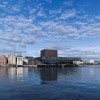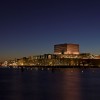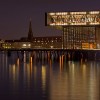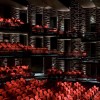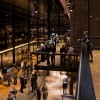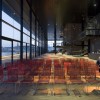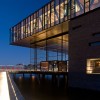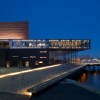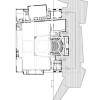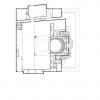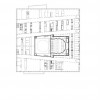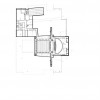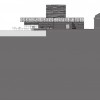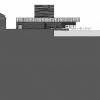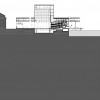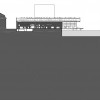The New Royal Playhouse (Det Nye Skuespilhus) sits on the Copenhagen harbor, a calm monument to culture and a nuanced design that reflects a respect for its place. The building, by Danish firm Lundgaard and Tranberg Arkitekter, is completely contemporary and yet seems as though it has always been there.
 Credit: Lundgaard & Tranberg Architects
Credit: Lundgaard & Tranberg Architects
The winning entry of an open, international competition hosted by the Danish Ministry of Culture in 2002, the design for the New Royal Playhouse was submitted by local architectural firm Lundgaard and Tranberg. The finished building varies little from the original proposal. Completed in 2008, the 21,000 m2 (226,044 sq. ft.) building opened to strong praise from the architectural community and the general public and has won several awards.
Occupying the former site of a ferry terminal, the New Royal Playhouse reflects many positive aspects of the Nordic/Danish architectural tradition. Architects Henrik Schmidt and Peter Thorsen shared their impressions on the design of the building.
Urban Attitudes
The New Royal Playhouse is one of several newer additions to the historic harbor waterfront, including the “Black Diamond” library (Den Sorte Diamant) and, most dramatically, the new Copenhagen Opera House. In comparison with the Copenhagen Opera House, the New Royal Playhouse has been a very uncontroversial project; the fact that the Playhouse was built to budget is also quite impressive for a public project, here in Denmark.
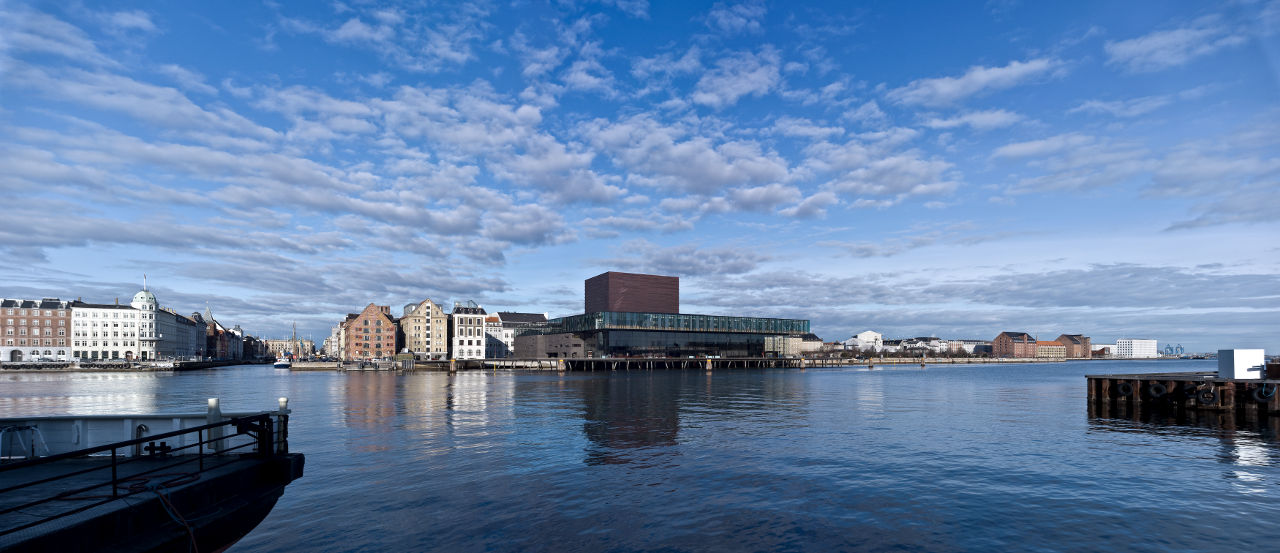
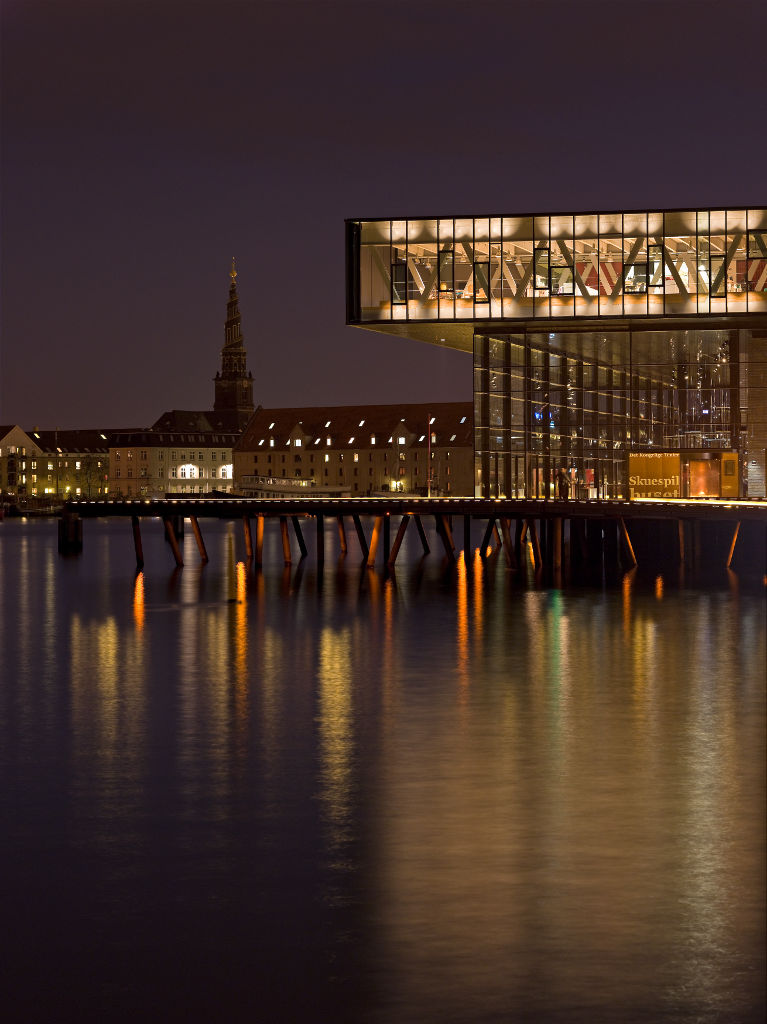
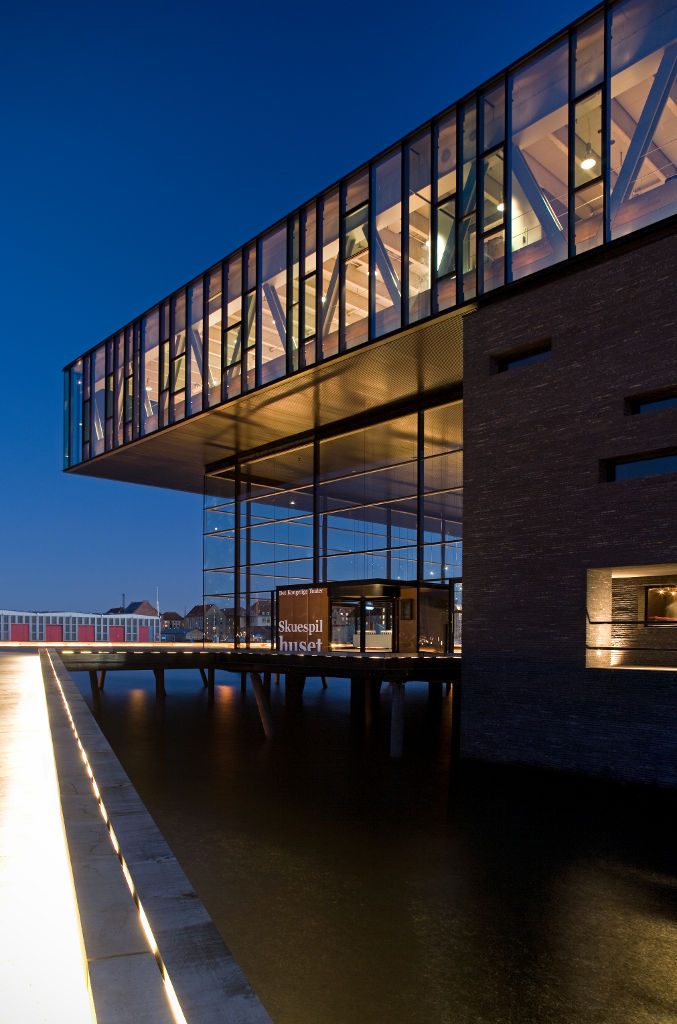
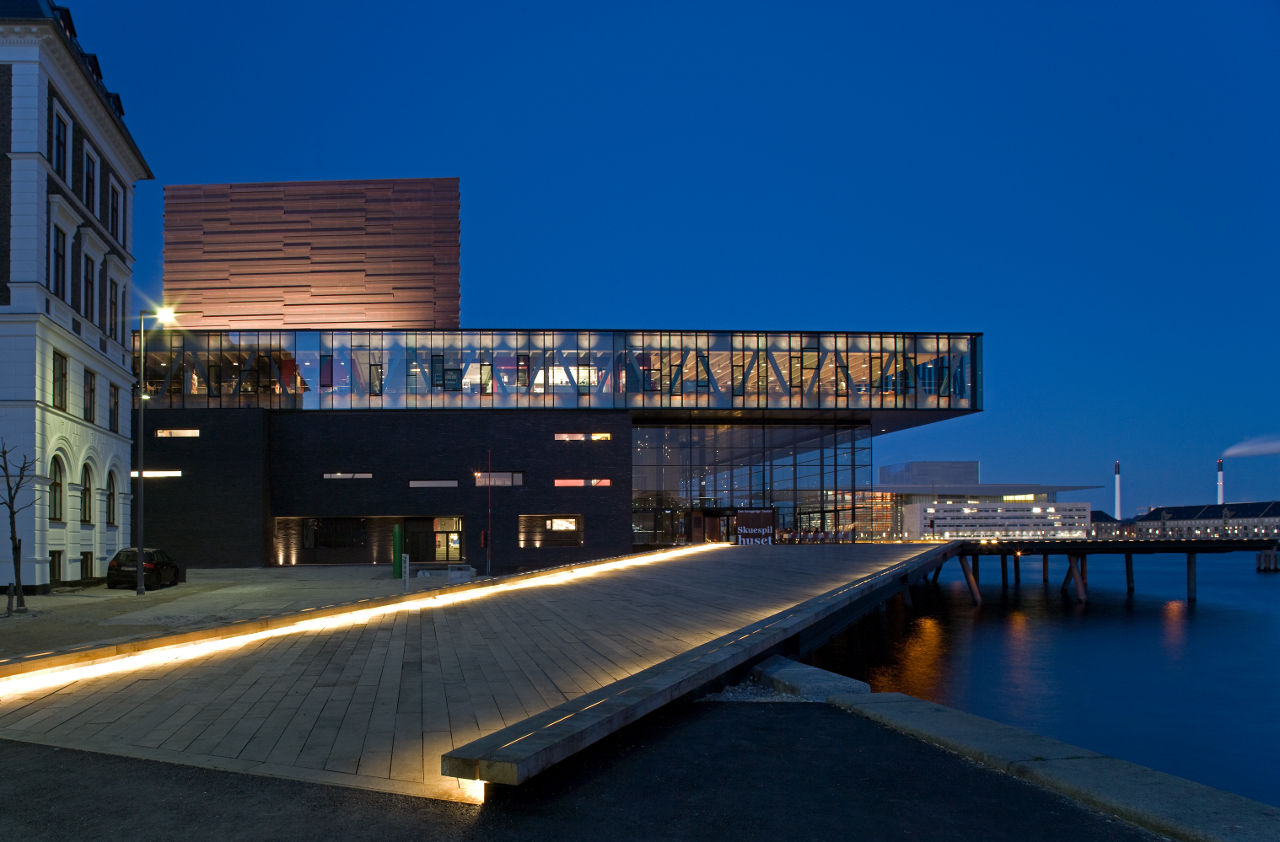
The New Royal Playhouse addresses the various sides of the site with appropriate attitudes. The building makes way for the Sankt Annæ Plads, which is a vital public square that connects to the harbor via a promenade. This promenade, on the harbor side, allows the Playhouse to make its most open invitation to the public, joining the city, the water, and the building. This sense of connection extends inside the building’s lobby, creating a kind of public urban room. The building then becomes a place for everyone, not just for those with tickets.
Along the more intimate Kvæsthusgade, the height of the New Royal Playhouse facade mirrors the buildings opposite, maintaining a kind of scale place-marker.
The New Royal Playhouse also relates to its context in its materials, which primarily are brick, copper, and glass. The selection of brick was inspired by the historic brick warehouses nearby, although the Playhouse bricks were custom-made (and will be described in more detail shortly). The copper that clads the Playhouse tower was inspired by the use of copper on Copenhagen’s historic church towers.
Into the Grotto
Spatially, the New Royal Playhouse unfolds from the main entry to the south off the promenade. The lobby, which mediates between the harbor space and the interior space, wraps around the rectangular central brick mass that is the main theater. The stairs, platforms, and access points to the theater float in the space and give it a sense of openness, with a street-like character. The lobby lighting was designed so that, during the night, the glass does not give a mirrored effect, instead maintaining the inside–outside connection.
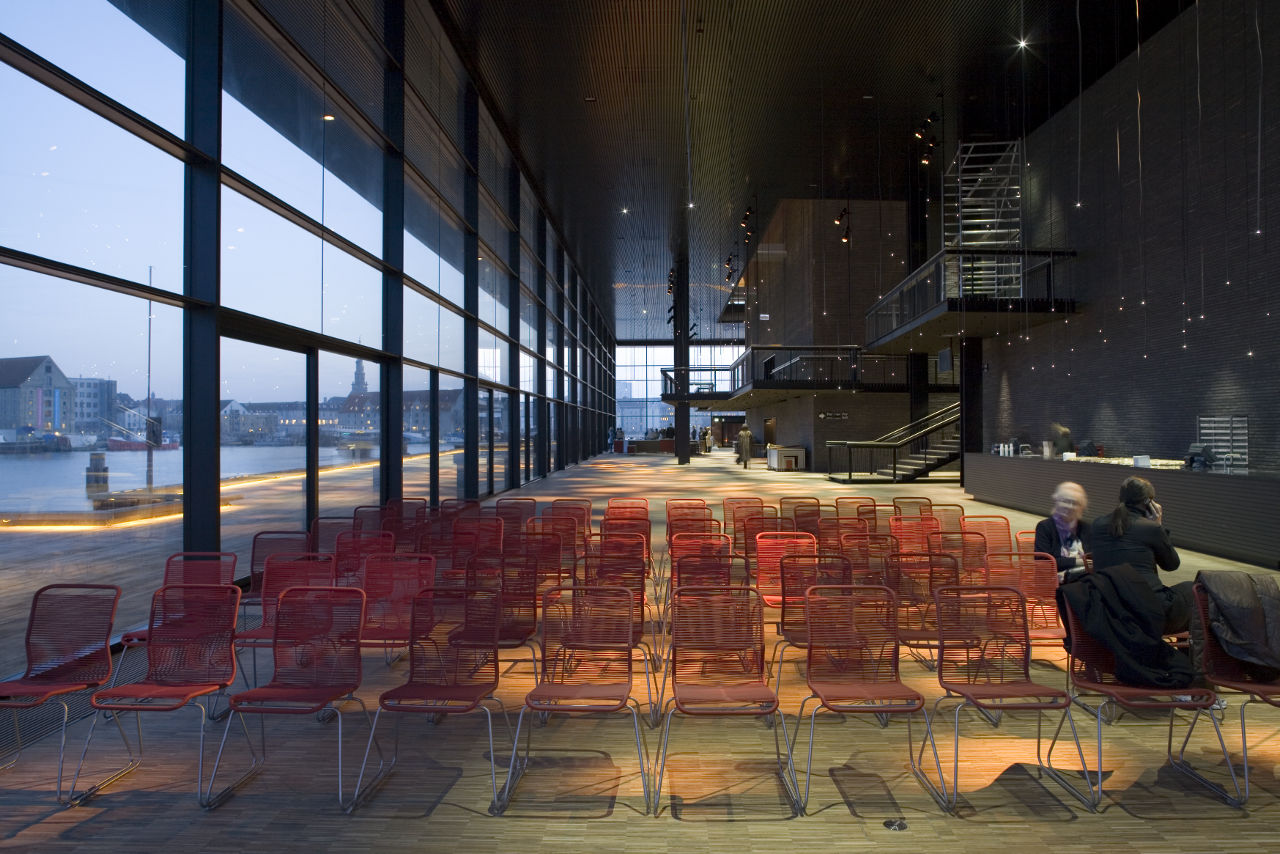
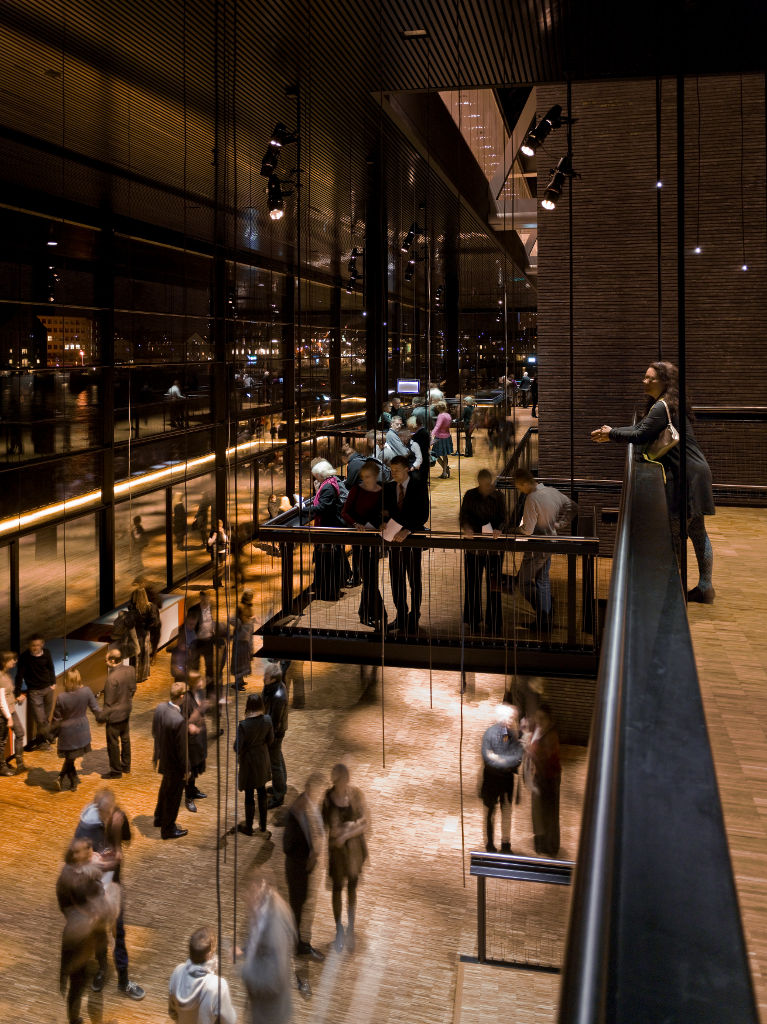
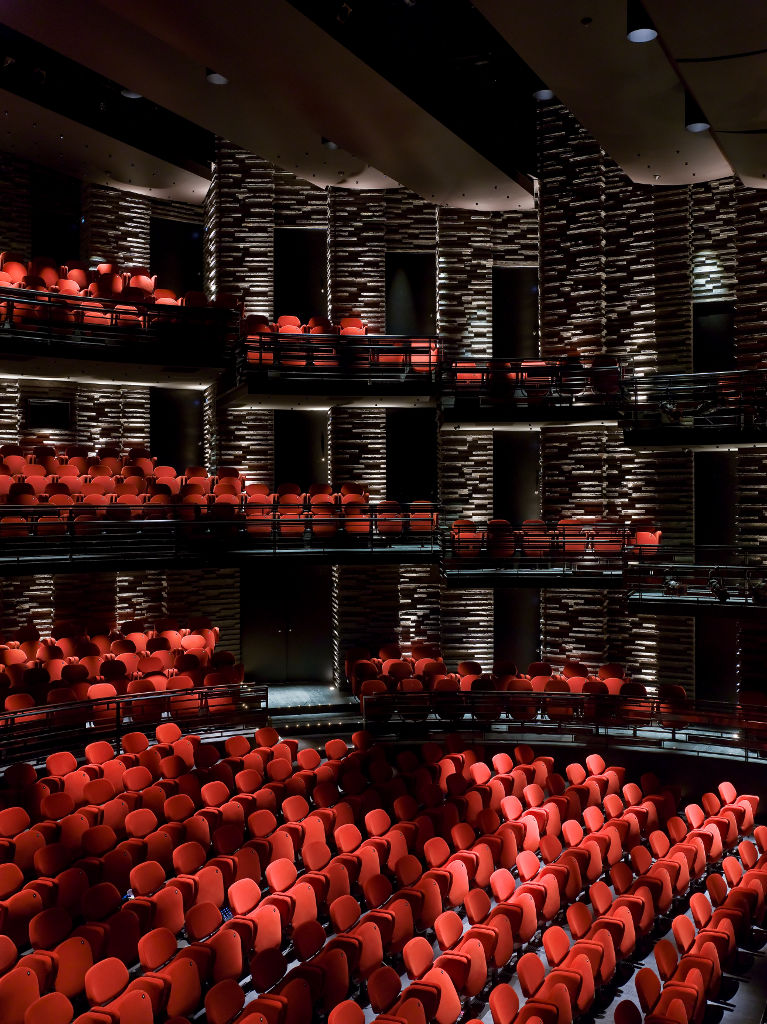
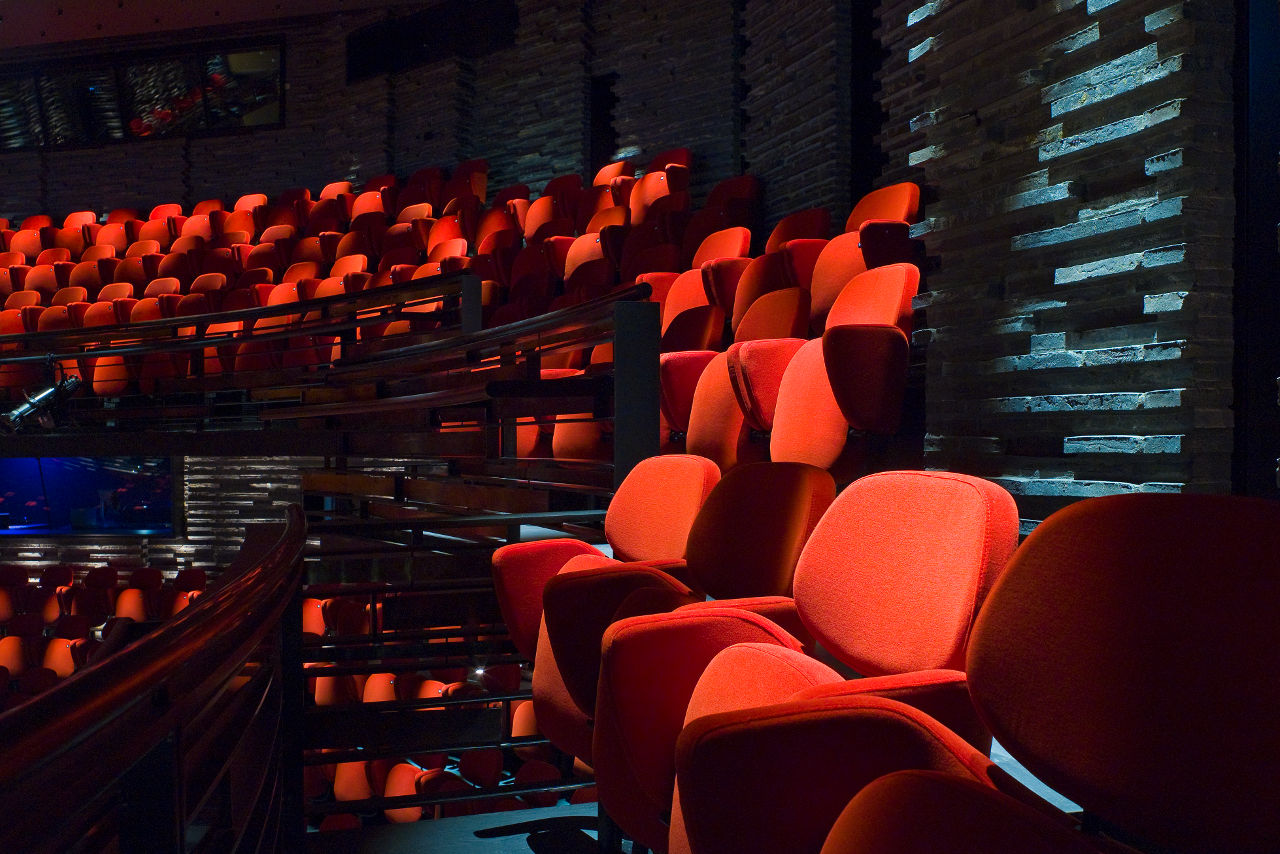
The main auditorium, some 658 seats, is a cylindrical, cave-like space with bricks facing the interior in a staggered, rustic pattern. The lighting accentuates the deep shadows created by the long bricks, and the arrangement and shape create a perception of closeness to the stage and of togetherness with the other members of the audience. Here is the point where the New Royal Playhouse is less about clarity and more about the mysterious and the magical, with the rugged cliffs of the brick walls, the artfully shadowy lighting, and the remarkable red seats. There is no proscenium or orchestra pit, so the theater can be arranged for modern or classical repertoires.
A glass-walled bridge contains offices, a canteen, and dressing rooms: this open corridor creates an opportunity for contact between administration, the actors, and others.
Client Leadership
It was most fortunate for the project that the Ministry of Culture agreed that theater director Michael Christiansen was to represent the public. His experience in theater and other projects translated well to being a client of unusual skill. The architects credit much of the project’s success to Christiansen’s ability to manage the project and focus the team and decision-making process. His approach emphasized shared aesthetic sensibilities, maintaining the budget, and keeping a profit for the contractor, to eliminate conflicts among parties.
Custom Elements
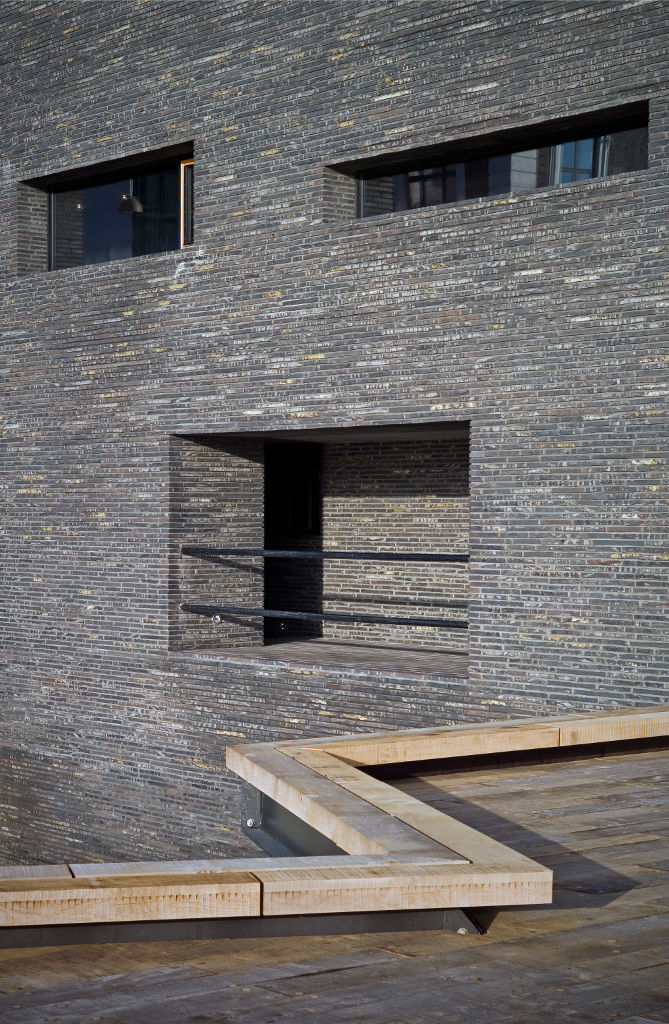 The brick for the New Royal Playhouse, an important design element used inside and out, was custom-designed and fabricated for the project. The architects collaborated closely with brickmaker Petersen Tegl, which created various samples over the course of a year and in competition with another brickmaker until the desired result was achieved.
The brick for the New Royal Playhouse, an important design element used inside and out, was custom-designed and fabricated for the project. The architects collaborated closely with brickmaker Petersen Tegl, which created various samples over the course of a year and in competition with another brickmaker until the desired result was achieved.
The theater seats were also custom-designed and fabricated, and they are the only brightly colored element in the design. They are intended to capture different body positions, and the different angles of the backs of the chairs depend on their respective locations in the theater. The color works such that, when lights are dimmed, they look completely black. Acoustically, the chairs provide a level of absorption that matches that provided by the human body: the theater will have the same acoustics no matter how many audience members are present.
Ecological Sustainability
The firm of Lundgaard and Tranberg treats sustainability as a concept that holistically integrates the social, cultural, economic, and ecological into quality architecture. In this way, the openness to the public of the New Royal Playhouse and its integration with the cityscape exemplify social sustainability, as well as being just good architecture. Also from an integrated standpoint, the Playhouse incorporates some effective strategies for ecological sustainability, although this issue was not made a top priority. That said, examples of sustainable technology incorporated in the building’s design include seawater cooling with a heat pump, night cooling, demand-driven ventilation, and some low-energy lighting, such as the fiber optic lights in the lobby. Also, excess heat from the theater is used to heat other spaces during the winter months. The durable materials that are expected to last at least 100 years with little maintenance were mostly selected from local or regional sources, saving on pollution and energy from transport. In terms of water, water-saving fixtures were used, such as waterless urinals. Finally, the primary wood flooring material is a parquet oak that was made from sawmill scrap.
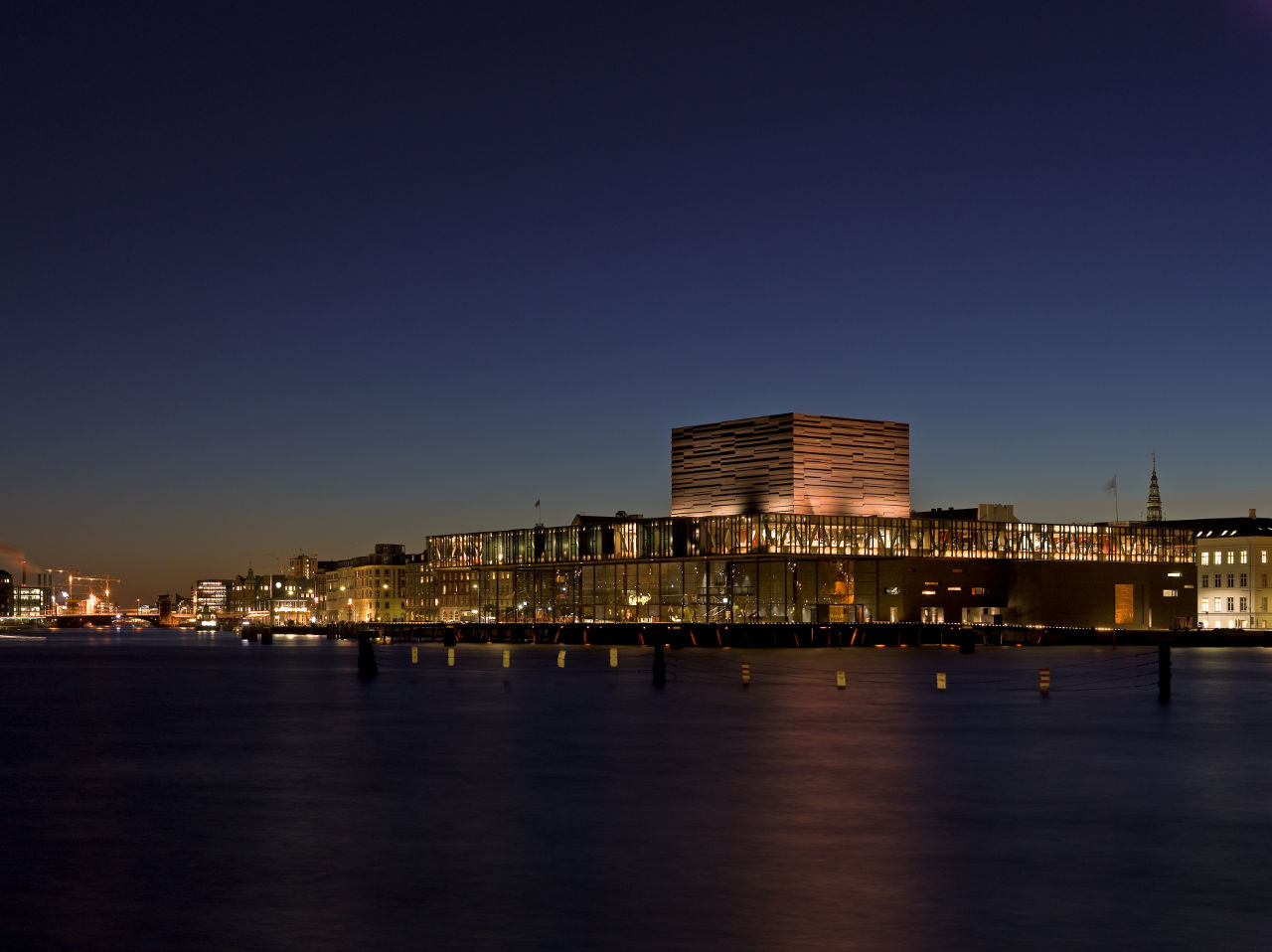

Greg Vendena
Greg Vendena, LEED AP is a writer, consultant, and architect based in Copenhagen, Denmark, with a background in design, construction, green building, and energy efficiency. His experience includes not only architectural design, but mixing concrete, building custom LED lighting, and energy auditing. He holds degrees in Architecture from Cranbrook Academy of Art and Arizona State University, and a Fine Art degree from California College of the Arts. His work and work together with others has been featured in the Cooper Hewitt National Design museum, and has been published and exhibited extensively. However, playing with his son and riding a bicycle around Copenhagen are what he enjoys the most.

